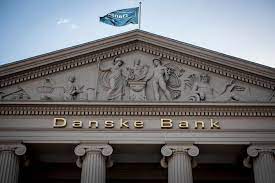We finally have the big one in money laundering. That, of course, is Danske Bank A/S (Danske Bank), a global financial institution headquartered in Denmark, which pled guilty this week and agreed to forfeit $2 billion to resolve the US investigation into its fraud on US banks. According to the Department of Justice (DOJ) Press Release, “Danske Bank defrauded U.S. banks regarding Danske Bank Estonia’s customers and anti-money laundering controls to facilitate access to the U.S. financial system for Danske Bank Estonia’s high-risk customers, who resided outside of Estonia – including in Russia.” Danske Bank also settled with the Securities and Exchange Commission (SEC) who said, in their Press Release, the Bank misled investors about its anti-money laundering (AML) compliance program in its Estonian branch and failed to disclose the risks posed by the program’s significant deficiencies.
On the criminal side of things, Danske Bank pled guilty to one count of conspiracy to commit bank fraud. Under the terms of the plea agreement, the company has agreed to criminal forfeiture of $2.059 billion. Danske Bank will also enter into separate criminal or civil resolutions with domestic and foreign authorities. As a part of the overall fine and penalty, the DOJ will credit nearly $850 million in payments that Danske Bank makes to resolve related parallel investigations. Danske Bank agreed to pay $413 million to settle the SEC’s charges related to other domestic and foreign authorities.
What The Said
Deputy Attorney General Lisa Monaco said, “Today’s guilty plea by Danske Bank and two-billion-dollar penalty demonstrate that the Department of Justice will fiercely guard the integrity of the U.S. financial system from tainted foreign money – Russian or otherwise. Whether you are a U.S. or foreign bank, if you use the U.S. financial system, you must comply with our laws. We expect companies to invest in robust compliance programs – including at newly acquired or far-flung subsidiaries – and to step up and own up to misconduct when it occurs. Failure to do so may well be a one-way ticket to a multi-billion-dollar guilty plea.”
Assistant Attorney General Kenneth A. Polite added “Danske Bank lied to U.S. banks about its deficient anti-money laundering systems, inadequate transaction monitoring capabilities, and its high-risk, offshore customer base in order to gain unlawful access to the U.S. financial system. Danske Bank accepted responsibility for defrauding U.S. financial institutions and funneling billions of dollars in suspicious and criminal transactions through the United States. As part of its guilty plea, Danske Bank will forfeit over $2 billion and implement significant changes to its compliance program and AML controls. This coordinated resolution with the Securities and Exchange Commission (SEC) and Danish authorities sends a clear message that the Department of Justice stands ready to work with our partners around the world to investigate corporate wrongdoing and hold bad actors accountable for their criminal conduct.”
Gurbir S. Grewal, Director of the SEC’s Division of Enforcement, said in the SEC Press Release, “Corporations that raise money from the public must disclose information that is material to investors, who then get to decide what risks they want to take. That’s the basic bargain of our securities laws and it extends to foreign issuers like Danske Bank, which sought to access our capital markets, even though its securities were not registered with the Commission. But as alleged in our complaint, Danske Bank repeatedly broke that bargain by misrepresenting to its shareholders, including U.S. investors, that it had strong anti-money laundering controls while hiding its significant control deficiencies and compliance failures.”
The Illegal Conduct
According to the DOJ, between “2008 and 2016, Danske Bank offered banking services through its branch in Estonia, Danske Bank Estonia. Danske Bank Estonia had a lucrative business line serving non-resident customers known as the NRP. Danske Bank Estonia attracted NRP customers by ensuring that they could transfer large amounts of money through Danske Bank Estonia with little, if any, oversight. Danske Bank Estonia employees conspired with NRP customers to shield the true nature of their transactions, including by using shell companies that obscured actual ownership of the funds. Access to the U.S. financial system via the U.S. banks was critical to Danske Bank and its NRP customers, who relied on access to U.S. banks to process U.S. dollar transactions. Danske Bank Estonia processed $160 billion through U.S. banks on behalf of the NRP.”
According to the SEC, “when Danske Bank acquired its Estonian branch in 2007, it knew or should have known that a substantial portion of the branch’s customers were engaging in transactions that had a high risk of involving money laundering; that its internal risk management procedures were inadequate to prevent such activity; and that its AML and Know-Your-Customer procedures were not being followed and did not comply with applicable laws and rules. The SEC alleges that, from 2009 to 2016, these high-risk customers, none of whom were residents of Estonia, utilized Danske Bank’s services to transact billions of dollars in suspicious transactions through the U.S. and other countries, generating as much as 99 percent of the Estonian branch’s profits. The complaint further alleges that, although Danske Bank knew of these high-risk transactions, it made materially misleading statements and omissions in its publicly available reports stating that it complied with its AML obligations and that it had effectively managed its AML risks. As the full extent of Danske Bank’s AML failures became apparent, its share price dropped precipitously.”
What Does it Mean for Compliance
The Danske Bank enforcement action presents multiple lessons learned for the compliance professional, both in AML compliance and anti-corruption compliance. Over the next several blog posts, we will be looking at the illegal schemes and internal control failures in some detail. I hope you will join me for the exploration.
Tomorrow, where did it all start to go wrong?










